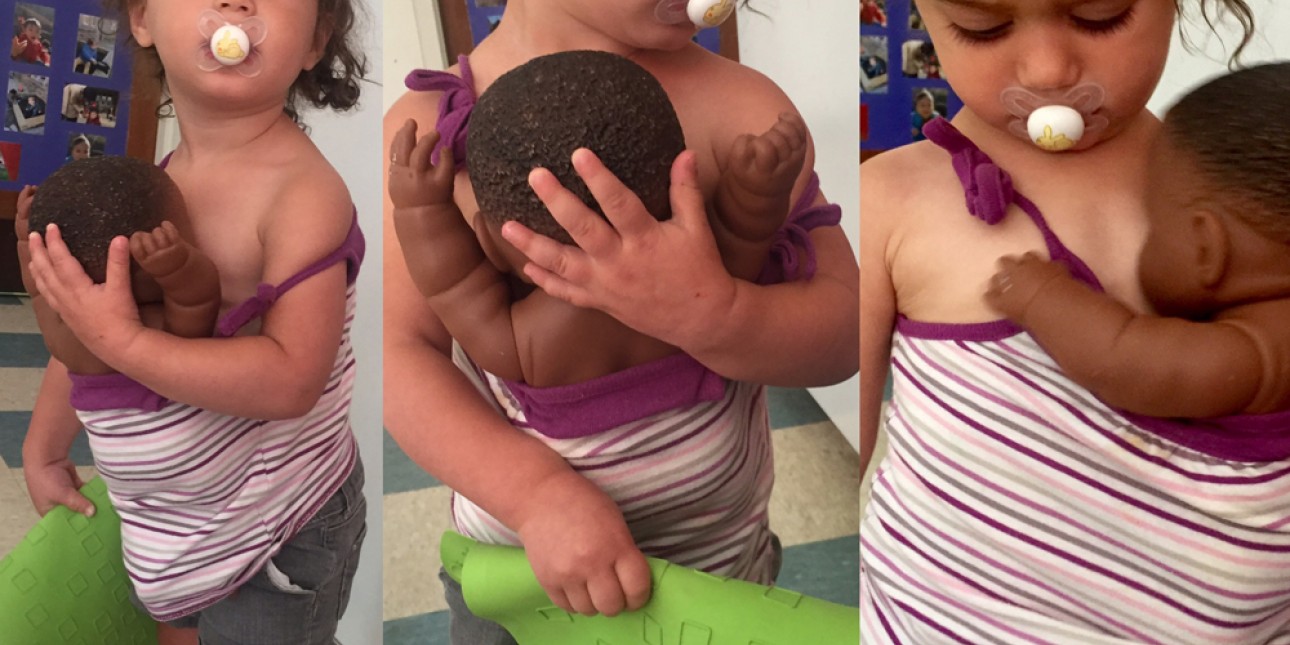In the Classroom: The Bumblebees

written by Michelle Gueco
Babies caring for babies
Summer has been a time for many transitions in the Bumblebees. We are saying goodbye to older toddlers that are moving up or moving away, and we are also welcoming many new children to our classroom.
This month we welcomed four new babies - Hannah (5 months), Maddie (4 months), Alona (6 months) and Charlotte (8 months). One thing we noticed right away was how hands-on our older toddlers have been with trying to help care for our younger ones.
From bringing over soft toys for our non-mobile infants, to identifying and acknowledging their needs and emotions (“baby crying, baby want a bottle”). These children are learning to help take care of another.
One of the ways we see our children internalize the concept of caring for others is through their pretend play. Our older toddlers have been closely observing our interactions with the infants and mimicking those same routines with their baby dolls.
We have observed our toddlers hugging, holding, rocking, feeding, changing, swaddling, singing and reading to their baby dolls.
One afternoon as we were finished serving lunch and preparing for nap time, I noticed one of our older toddlers, take a baby doll and stuff it into her shirt. We were in the middle of cleaning up, so my first instinct was to say, “Baby dolls don’t go in your shirt, silly! Which basket should we put our baby dolls in?”
Instead, I paused and took a second look. What I initially thought was this child hiding the baby, was actually her holding her doll in a baby carrier. I watched as she paced around the room, gently holding the back of the baby’s head with one hand, directing the baby’s mouth to her chest, and encouraging the baby to “eat.” It was so heartwarming to see her nurturing this baby doll with such great care.
When it was almost time to head back to the nap room, instead of putting the baby back into the basket, she placed the baby on the rug and covered it with a blanket. She patted the baby’s back and sang a quick song before dashing off for her own nap.
These interactions are the kind of genuine learning that bridges the age range in our classroom. There is a wonderful back and forth exchange that occurs with older toddlers learning self-help and social skills by helping to nurture the younger ones, and the younger ones learning to crawl, walk, and talk through their interactions and observations with the older ones.
And, just like at home, getting the older children involved in caring for the younger ones also helps to ease the feeling of “getting less attention” from us, similar to having a new sibling. One way in which the Bumblebees are one big classroom family!
Classrooms